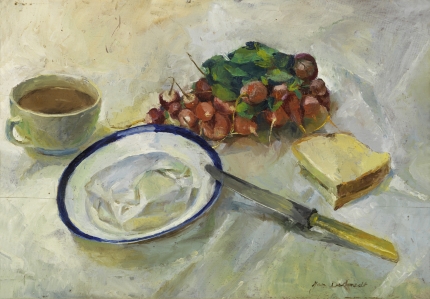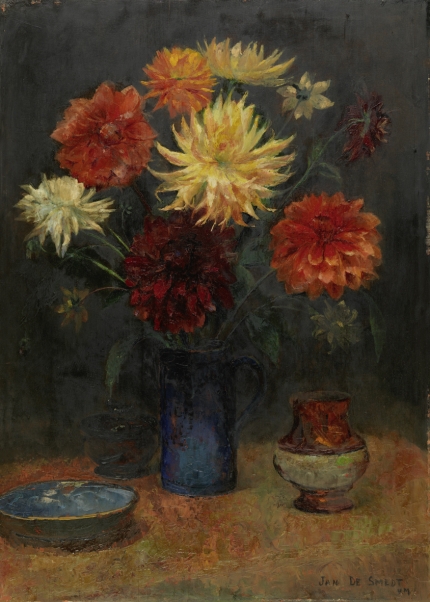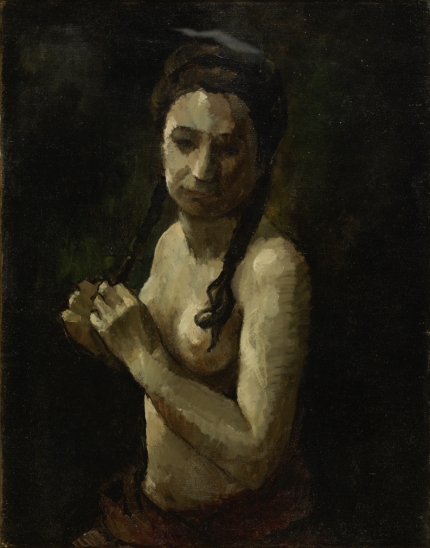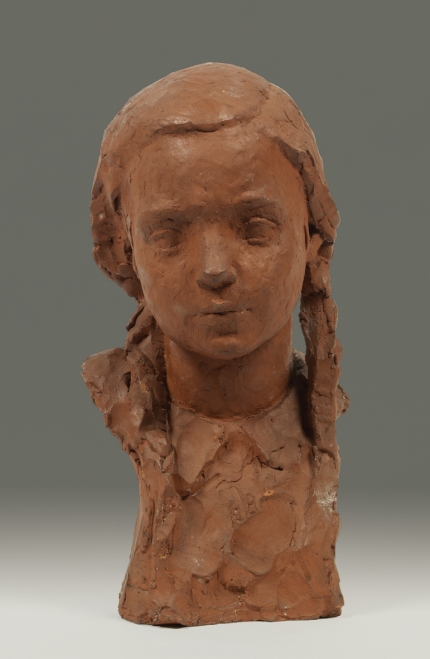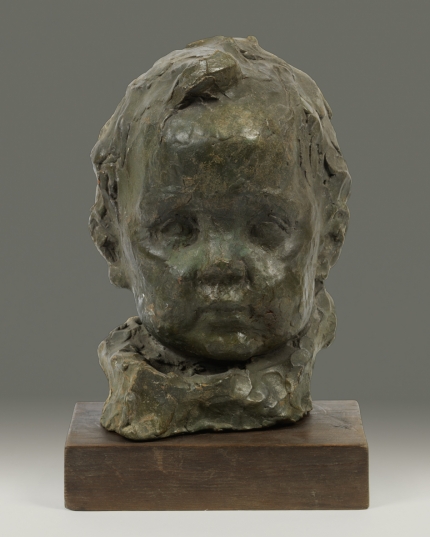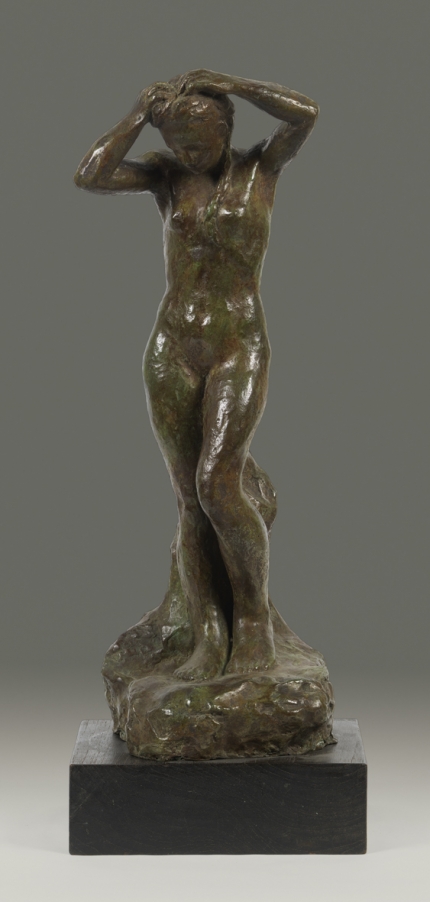A multi-facetted oeuvre
It is somewhat difficult to spontaneously link Jan De Smedt with one of the leading artistic movements of his time. He was closest to the intimist painters, who turned their backs on pure expressionism and focused on human dignity and the warmth of domestic interiors. He remained faithful to figurative art but followed his own path, creating a multi-facetted oeuvre that was centred on expression and sensitivity. He made portraits, landscapes, still lifes, flowers and nudes, as well as a variety of seascapes.
Portraits
Portraits are omnipresent in both De Smedt’s sculptures and his paintings. His portraits were mainly of his family and close friends, with his favourite subjects being those of his wife, his son and himself. In his portraits, he tried to go beyond mere appearances and express inner feelings.
Terracotta and bronze
De Smedt also showed his talent in his sculptures, which were often in terracotta or bronze. Here too, the artist concentrated on portraits, favouring figures in a symbolic pose in works ranging from a child’s head to the harmonious power of femininity. This was how, one morning, he came to make a statuette of his wife wearing a dressing gown - Reste comme ça! Ne bouge pas! (Stay as you are! Don’t move!).
Jan De Smedt, Still Life with Radishes, ca. 1930. Oil on panel, 37 x 53 cm.
Jan De Smedt, Gentle Breakers I, 1948/1951. Oil on canvas on panel, 28 x 37,5 cm
Jan De Smedt, Still Life with Dahlias in a Blue Bottle, 1936. Oil on panel, 88,5 x 63 cm.
Jan De Smedt, Walcheren Canal II, 1936. Oil on panel, 51 x 64 cm.
Jan De Smedt, Getting Washed, 1943. Oil on canvas, 69,5 x 54,5 cm.
Jan De Smedt, Erna, 1948. Terracotta, 37 x 19 x 18 cm
Jan De Smedt, Marcel, 1935. Terracotta on wooden base, 23,5 x 16,5 x 12 cm
Jan De Smedt, Getting Washed, 1940/1941. Bronze, on wooden base, 43 x 17 cm.

